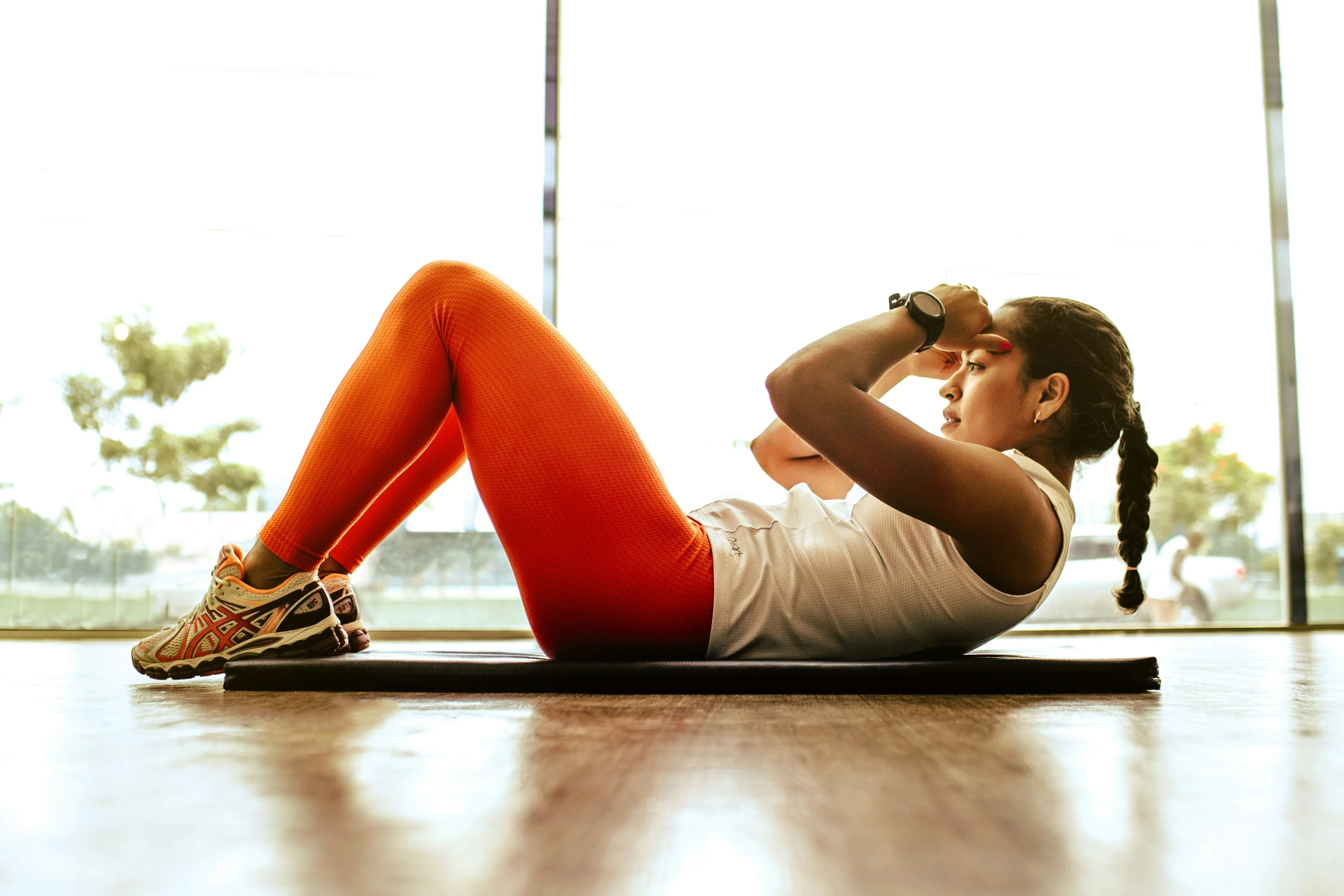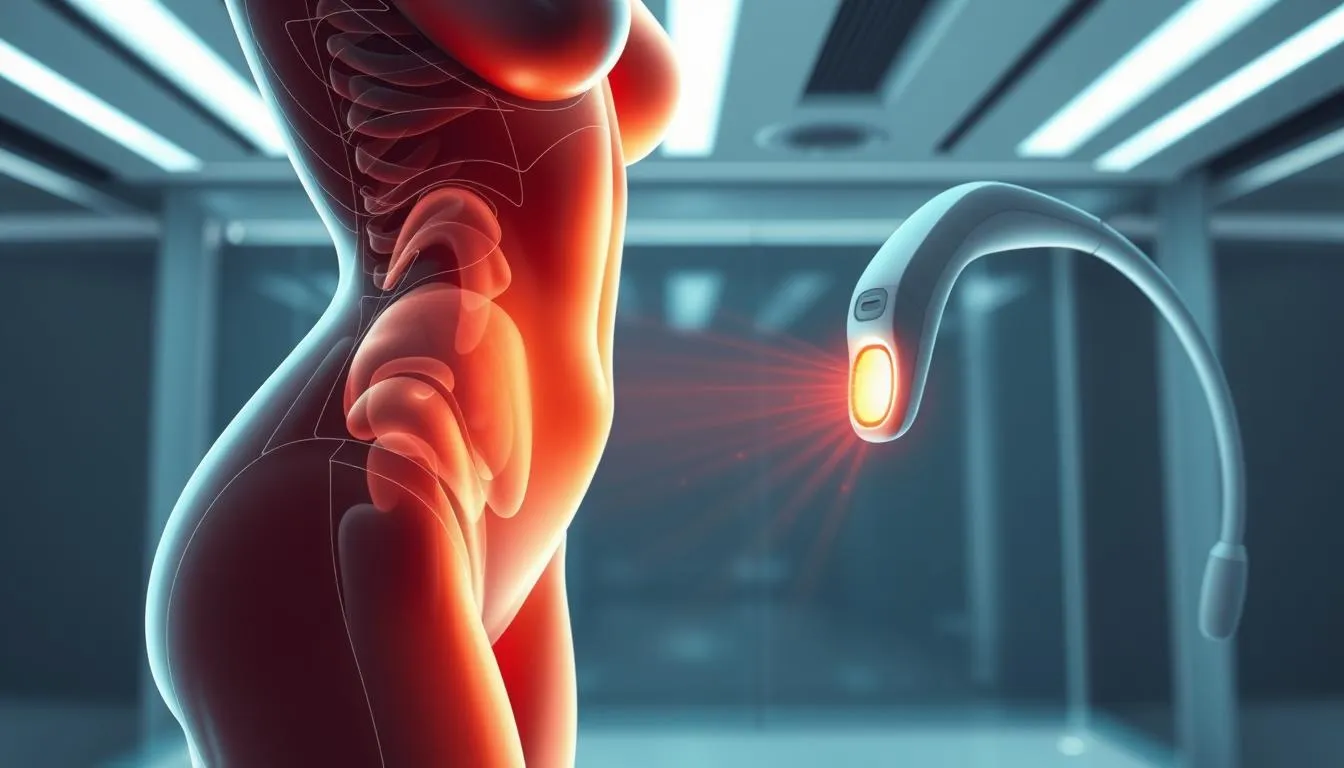I remember standing in front of a mirror, wanting a gentle change that fit my life — not a hospital stay. This guide meets you there. It shows how modern non‑invasive body sculpt options reshape targeted areas without surgery and long downtime.
Today’s body contouring and body sculpting procedures use FDA-cleared tech like cryolipolysis, laser lipolysis, focused ultrasound, radiofrequency, and certain injectables. These treatments aim for modest fat reduction in specific spots, not weight loss, and often work in a few quick sessions.
Expect clear explanations of how each treatment works, the benefits you can expect, and common effects on skin and contour. We’ll set realistic goals so results match your routine and wellness plan.
By the end you’ll know which areas body providers treat, the typical timeline for results, and the safest way to pick a plan that fits your schedule and goals.
Key Takeaways
- These approaches reduce subcutaneous fat in targeted areas without surgery.
- Results are modest, percentage-based, and last with stable weight.
- Options include CoolSculpting, SculpSure, ultrasound, radiofrequency, and select injectables.
- Most treatments have little downtime and mild temporary effects.
- Choose providers with proper training; injections need medical expertise.
What non‑invasive body sculpt means today in the United States
Device-driven lipolysis now refines targeted fat pockets using cold, heat, light, or sound rather than surgery.
These treatments target subcutaneous fat—fat located beneath the skin and above muscle—to shrink specific areas of the body without incisions. Providers use energy to disrupt fat cells so the body slowly metabolizes them over weeks.
How this differs from weight loss: contouring focuses on local reduction and shape change, not overall weight loss. Results are measured as percentage reduction in a treated area, not pounds on the scale.

- Cryolipolysis freezes cells; lasers use heat; ultrasound and light trigger cell release.
- Most devices are FDA cleared for specific uses and are done in outpatient settings with little downtime.
- Maintaining gains works best with a steady diet and regular exercise; major weight changes can hide results.
Ask your provider which procedure suits an area and expected results so you set clear, realistic goals.
Is non‑invasive body sculpt right for you?
Deciding if targeted contouring fits your goals starts with your current weight and the areas you want to refine.
Ideal candidates are people who are at or near their goal weight and who have small, defined pockets of fat that resist diet exercise and regular exercise. These procedures give modest, percentage-based reduction in treated areas. Results are gradual and often need more than one session to reach the expected outcome.
If you want natural-looking refinement with little to no downtime, these procedures can fit a busy schedule. They work best for spot reduction and contouring—not overall weight loss.
When to consider surgery instead
Choose liposuction or skin-excision lifts when you need dramatic debulking, major reshaping, or skin removal after big weight changes. Surgical options deliver larger results but include anesthesia, incisions, and longer recovery. Discuss plastic surgery with a board-certified surgeon if you need more substantial change.
- Close to goal weight + small resistant areas = good candidate.
- Expect percentage-based reduction; some procedures require multiple visits.
- For major volume loss or excess skin, consider liposuction or lifts.
| Goal | Best Option | Notes |
|---|---|---|
| Minor contour refinement | Non-surgical reduction | Little downtime; incremental results |
| Significant fat removal | Liposuction | More dramatic reduction; requires recovery |
| Excess skin after weight loss | Skin excision / lifts | Removes loose skin; surgical recovery |
| Busy schedule, mild change | Clinic-based procedures | Multiple short sessions possible |

Core technologies and treatments: how they reduce fat and shape the body
Clinics pair cooling, heat, light, and sound to reshape specific areas while protecting nearby tissues.
Cryolipolysis (controlled cooling)
Cryolipolysis applies controlled cooling to freeze fat cells while sparing skin, muscle, and nerves. Typical appointments run 35–60 minutes and can cut about 20–25% of treated fat per session. Expect redness, numbness, or tingling that fades; results appear in 1–3 months.
Laser lipolysis (heat-based)
Laser lipolysis uses a specific wavelength with active surface cooling. Sessions take about 25 minutes per area. Early changes show at ~6 weeks, with full results near 12 weeks. The feeling is usually a safe warming sensation.
Ultrasound and focused energy
Ultrasound devices focus energy to disrupt fat cell walls on the abdomen and flanks. Plans often use 1–3 visits spaced two weeks apart, with outcomes in 6–12 weeks.

Injectable deoxycholic acid
Deoxycholic acid injections target submental fullness under the chin. Sessions last ~20 minutes and usually require 2–4 treatments a month apart. Destroyed fat cells do not return if weight is stable.
Red light and radiofrequency
Red light therapy prompts fat cells to release contents, shrinking cell volume within hours and improving as the body clears the release. Radiofrequency adds heat to boost collagen and tighten skin, often paired with fat reduction for better contouring.
- Matching each treatment to the area and goal improves safety and results.
- Combining technologies (for example, cooling plus radiofrequency) can debulk and firm at once.
| Technology | Typical session | Result timeline |
|---|---|---|
| Cryolipolysis (controlled cooling) | 35–60 minutes | 1–3 months; ~20–25% per session |
| Laser lipolysis | 25 minutes per area | 6–12 weeks |
| Ultrasound | 1–3 sessions, 2 weeks apart | 6–12 weeks |
| Deoxycholic acid | ~20 minutes; 2–4 sessions | Results persistent with weight maintenance |
| Red light / Radiofrequency | ~30 minutes; often combined | Hours to months; improves skin and contour |
Treatment areas, session times, and expected results by weeks
Treatment timing and target zones vary by device, so knowing where providers work and how long sessions take helps set realistic expectations.
Common areas include the abdomen and flanks for debulking, inner and outer thighs for saddlebag or gap refinement, upper arms for sleeker lines, buttock-adjacent regions for lift, and the submental area under the chin for jawline definition.
What “takes minutes” really means
Sessions often fit into a lunch hour. Cryolipolysis runs about 35–60 minutes per applicator. SculpSure treats an area in roughly 25 minutes. Red light sessions are ~30 minutes and Kybella injection visits last ~20 minutes.
Results and timelines
Early changes can show in hours with red light therapy, or within 1 month for cryolipolysis. Most devices reach final contour between 6 and 12 weeks as disrupted cells are cleared.
- Ultrasound plans commonly use 1–3 treatments spaced two weeks apart.
- Kybella normally needs 2–4 monthly sessions for submental reduction.
- Providers may treat multiple areas in one visit with minimal recovery and little disruption to daily life.
For planning and photos, ask your provider about expected weeks to final results and any short aftercare that helps optimize reduction and skin contour. See more on timing and visits at how long treatments take.
Benefits, limits, and realistic outcomes
Many people seek targeted refinement that looks natural and fits into daily life without major recovery.
Visible contouring without surgery or general anesthesia
Key benefits include little to no downtime, no general anesthesia, and no scars. Most patients leave a clinic and return to normal activities the same day.
Changes are subtle and discreet. That gradual pace helps results look natural.
Reduction vs. removal: percentage-based fat loss, not weight loss
Treatments deliver modest, percentage-based reduction in treated areas rather than full removal or pounds lost. Expect incremental fat reduction and possible need for multiple visits.
Providers measure shrinkage by area and cell loss, not by overall scale weight. This distinction sets realistic expectations and reduces disappointment.
How long results last with stable weight and exercise
Results can last when you keep a steady weight with sensible diet and regular exercise. Significant weight gain may hide prior contour gains.
Skin quality affects how defined results look; combining fat reduction with skin-tightening modalities often improves finish. Learn more about the pros and cons of surgical vs non-surgical body when planning treatment.
Safety, side effects, and recovery time
Knowing common side effects helps you plan the right recovery time and get the best results.
Downtime expectations: Expect little to no downtime after most procedures. You can usually return to routine activities right away. That makes scheduling easy around work or family plans.
Common temporary effects:
- Mild swelling or redness where the device was applied.
- Numbness, tingling, or brief sensitivity as cells heal.
- Occasional bruising that fades over days to weeks.
Cryolipolysis often feels very cold at first, then the treated area numbs. Injectable deoxycholic acid under the chin can cause noticeable swelling for a few days. Red light treatments carry very low risk but are not recommended during pregnancy or for people with reduced liver function, since released fat must be processed safely by the body.
Who should avoid certain options: People who are pregnant, breastfeeding, or have significant liver issues should skip some procedures. Your provider will review medical history and tailor device choice to the treated areas and your comfort.
| Procedure | Common effects | Typical recovery time (weeks) | Notes |
|---|---|---|---|
| Cryolipolysis | Redness, numbness, tenderness | 0–2 weeks | Intense cold at start; tenderness fades |
| Injectable deoxycholic acid | Swelling, bruising | 1–4 weeks | Provider monitors for rare prolonged numbness |
| Red light / RF | Minimal; mild warmth | 0 weeks | Low risk; avoid if pregnant or liver-compromised |
| Ultrasound / Laser | Redness, tingling | 0–2 weeks | Good for contouring small areas and improving skin |
Choosing a qualified provider and planning your body sculpting path
Start by choosing a qualified clinician who matches your goals and knows when a surgical option like liposuction is a better fit.
Credentials to look for
- Seek an American Board of Cosmetic Surgery (ABCS) diplomate to oversee your plan; they know surgical and device options.
- Trained RNs and medical aestheticians can perform many device sessions under physician supervision.
- For under-the-chin injections with deoxycholic acid, pick a provider with advanced anatomy skills to reduce risk and improve precision.
Expect a clear roadmap that lists how many sessions you need, spacing, and whether combining ultrasound or radiofrequency will help. Typical spacing: ultrasound every two weeks and Kybella or deoxycholic acid monthly.
Budget and lifestyle alignment
- Get a full cost estimate, including touch-ups, so you can spread payments and appointments.
- Coordinate treatments with your diet and exercise routine to keep weight steady and protect results.
- If candidacy calls for greater change, an ABCS surgeon can explain trade-offs between procedures and surgical options like liposuction.
Track progress with photos, measurements, and follow-up visits to refine the plan as reduction unfolds.
Learn more about combining surgical and non-surgical pathways at choosing the right path to body.
Conclusion
Good outcomes start when the right device meets the right area and a clear timeline.
Strong, clear planning helps you expect gradual fat reduction over weeks. FDA-cleared options like cryolipolysis, laser lipolysis, ultrasound, radiofrequency, red light, and deoxycholic acid for the chin offer focused treatment with session times from 20–60 minutes.
Most patients see visible change in 6–12 weeks as the body clears treated cells. These procedures target fat cells in a specific area, so results build slowly and look natural when paired with steady habits.
If you need major removal or skin excision, discuss liposuction or plastic surgery. Otherwise, consult an ABCS diplomate or trained clinician to map a safe, realistic plan and recovery time.
FAQ
What does non-invasive body sculpt mean today in the United States?
It refers to a range of FDA-cleared or FDA-regulated treatments that reduce localized fat or tighten skin without surgery or general anesthesia. These procedures use technologies like controlled cooling (cryolipolysis), heat-based laser lipolysis, ultrasound, radiofrequency, red light, and injectables such as deoxycholic acid to target subcutaneous fat and improve contouring.
How does contouring target subcutaneous fat versus overall weight loss?
Contouring targets specific pockets of subcutaneous fat beneath the skin, changing shape and proportion. It does not produce significant weight loss; instead, it reduces fat volume in treated areas. Maintain a stable weight and exercise to keep results visible.
Who is an ideal candidate for these treatments?
Ideal candidates are close to their goal weight with good skin tone and stubborn, diet- and exercise-resistant areas. People seeking modest contouring rather than major weight loss see the best outcomes.
When should someone consider surgery like liposuction or a lift instead?
Consider surgery if you need large-volume fat removal, significant skin tightening, or a dramatic change in shape. Surgical options like liposuction or body lifts work better for excess skin, major weight loss aftermath, or when repeated non-surgical attempts don’t meet goals.
How does cryolipolysis (controlled cooling) work for stubborn bulges?
Cryolipolysis freezes fat cells in the treated zone, causing controlled cell breakdown (lipolysis). The body gradually clears the disrupted cells over weeks, reducing the treated bulge without harming surrounding tissue.
What is laser lipolysis and how is it different from other heat-based options?
Laser lipolysis uses targeted heat to disrupt fat cells and can also stimulate some skin tightening. It differs from radiofrequency and ultrasound by using specific light wavelengths to achieve lipolysis and collagen effects in selected areas.
Where is ultrasound fat reduction most commonly used?
Ultrasound-based treatments focus energy on the abdomen and flanks to break down fat cells. Some devices also treat thighs and submental areas, depending on the applicator and provider expertise.
How does injectable deoxycholic acid work for a double chin?
Deoxycholic acid (brand example: Kybella) is injected into submental fat to disrupt fat cell membranes. Over a series of treatments, the body clears the debris, reducing fullness under the chin. Multiple sessions may be required for optimal contouring.
Can red light therapy shrink fat cells’ volume?
Red light therapy can temporarily alter cell membranes and reduce cell volume, helping with mild contouring and complementing other treatments. Results vary and often require multiple sessions and maintenance.
What does radiofrequency do for skin tightening and contour enhancement?
Radiofrequency heats deeper dermal layers to tighten collagen and elastin, improving skin laxity and enhancing overall contour. It’s commonly combined with fat-reduction methods to refine results.
Which areas are commonly treated with these procedures?
Common targets include the abdomen, flanks (love handles), thighs, arms, buttocks, and under the chin. Providers may also treat bra rolls, back fat, and knee areas depending on the device and patient needs.
What does “takes minutes” mean for a treatment session?
Many sessions last 20–60 minutes per area. Some focused procedures can be shorter, while larger zones or combined treatments will take longer. Your provider will outline the expected session time during consultation.
When should I expect to see results?
Early changes can appear within hours to days for swelling reduction, but meaningful fat reduction usually emerges over weeks to 12 weeks as the body removes damaged fat cells. Final results depend on the treatment and individual response.
Are the results permanent and how long do they last?
Treated fat cells are destroyed and do not regenerate. Results last with stable weight and healthy habits. Weight gain can enlarge remaining fat cells and alter contour, so diet and exercise help preserve outcomes.
What benefits can I expect without surgery or general anesthesia?
Benefits include visible contouring, minimal recovery time, no surgical scars, and lower immediate risk compared with operations. Many people return to normal activities the same day.
What are the limits—how much fat reduction should I expect?
Expect percentage-based fat reduction in treated areas, not major weight loss. Typical reductions per area range from modest to significant depending on the method, but realistic expectations are essential.
What downtime and recovery should I plan for?
Most procedures have little to no downtime. Temporary effects such as swelling, numbness, redness, tingling, and bruising can last days to weeks. Providers often recommend avoiding intense exercise for a short period.
What common side effects should I know about?
Expect temporary swelling, redness, tenderness, numbness, and occasional bruising. Rarely, prolonged numbness or nodules occur. Your provider will review side effects specific to the chosen treatment.
Who should avoid certain treatments?
People who are pregnant, breastfeeding, or have certain medical conditions such as uncontrolled liver disease, severe cold-related disorders (for cryolipolysis), or active infections in the area should avoid specific therapies. Discuss medical history with a qualified provider.
What credentials and qualifications should I look for in a provider?
Look for board-certified plastic surgeons, dermatologists, or trained medical providers such as registered nurses and medical aestheticians who have documented training on the device. Verify office accreditation, device FDA clearance, and before-and-after results.
How do I build a treatment plan and combine modalities?
A good plan considers your goals, number of treatments, spacing between sessions, and possible combinations—such as cooling plus radiofrequency or laser plus skin tightening. Providers tailor plans after assessment and may recommend adjunctive lifestyle changes.
What should I budget for these treatments?
Costs vary widely by procedure, device, provider, and number of sessions. Expect a range from modest single-session fees to higher costs for combined or repeat treatments. Discuss financing, package pricing, and realistic expectations during consultation.
How should I align treatment with diet and exercise?
Treat these procedures as contouring tools that complement a healthy lifestyle. Maintain a consistent diet and exercise routine before and after treatment to optimize and preserve results.
